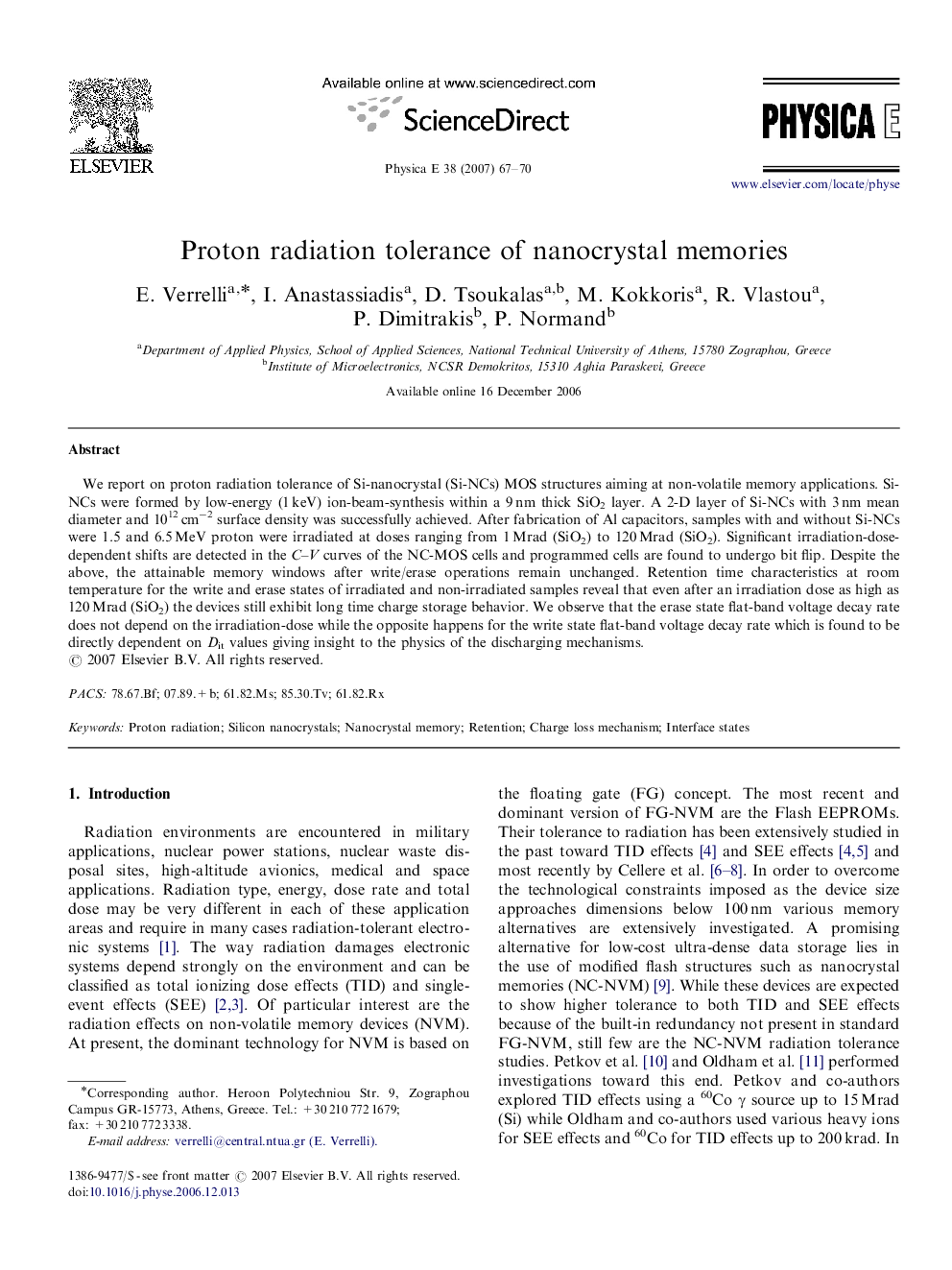| Article ID | Journal | Published Year | Pages | File Type |
|---|---|---|---|---|
| 1547674 | Physica E: Low-dimensional Systems and Nanostructures | 2007 | 4 Pages |
We report on proton radiation tolerance of Si-nanocrystal (Si-NCs) MOS structures aiming at non-volatile memory applications. Si-NCs were formed by low-energy (1 keV) ion-beam-synthesis within a 9 nm thick SiO2 layer. A 2-D layer of Si-NCs with 3 nm mean diameter and 1012 cm−2 surface density was successfully achieved. After fabrication of Al capacitors, samples with and without Si-NCs were 1.5 and 6.5 MeV proton were irradiated at doses ranging from 1 Mrad (SiO2) to 120 Mrad (SiO2). Significant irradiation-dose-dependent shifts are detected in the C–V curves of the NC-MOS cells and programmed cells are found to undergo bit flip. Despite the above, the attainable memory windows after write/erase operations remain unchanged. Retention time characteristics at room temperature for the write and erase states of irradiated and non-irradiated samples reveal that even after an irradiation dose as high as 120 Mrad (SiO2) the devices still exhibit long time charge storage behavior. We observe that the erase state flat-band voltage decay rate does not depend on the irradiation-dose while the opposite happens for the write state flat-band voltage decay rate which is found to be directly dependent on Dit values giving insight to the physics of the discharging mechanisms.
